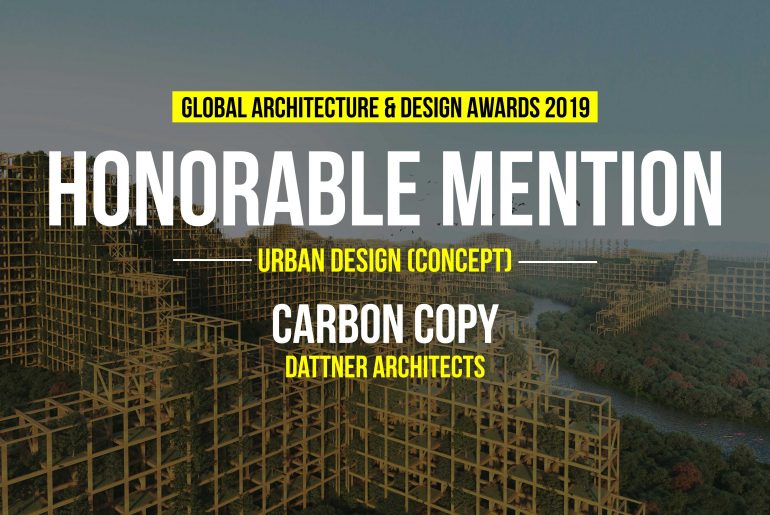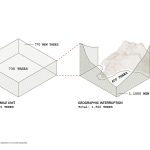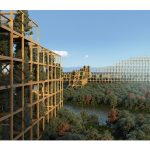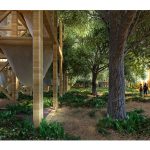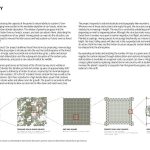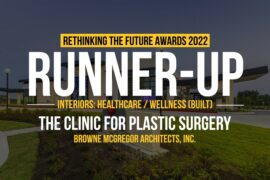Human development is outpacing the capacity of the planet’s natural ability to sustain it. Over-building, farming, and logging have resulted in the inevitable depletion of our forests, which are an important source of carbon dioxide absorption. The release of greenhouse gases into the atmosphere is happening faster than our forests, oceans, and soils can absorb them, disturbing the carbon cycle crucial to the equilibrium of our planet. Having paved our way into this situation, can our urge to build, in fact, help to reverse course and ensure a positive future, even as forest cover steadily diminishes?
Global Design & Architecture Design Awards 2019
Honorable Mention | Category: Private Residence (Built)
Studio: Dattner Architects
Architect: Kelsey Handelman
Country: United States
 Skyscraper, Landscape, Forest: Our project redefines these three terms by proposing a new ecology in which the verticality of the skyscraper is introduced into the vast horizontal expanse of the forest. Through an infrastructure of large-scale horizontal and vertical timber grids, a taller and denser “skyforest” combats rampant deforestation and the subsequent disruption of the carbon cycle, fosters new growth and biodiversity, and posits a new natural habitat for wildlife.
Skyscraper, Landscape, Forest: Our project redefines these three terms by proposing a new ecology in which the verticality of the skyscraper is introduced into the vast horizontal expanse of the forest. Through an infrastructure of large-scale horizontal and vertical timber grids, a taller and denser “skyforest” combats rampant deforestation and the subsequent disruption of the carbon cycle, fosters new growth and biodiversity, and posits a new natural habitat for wildlife.
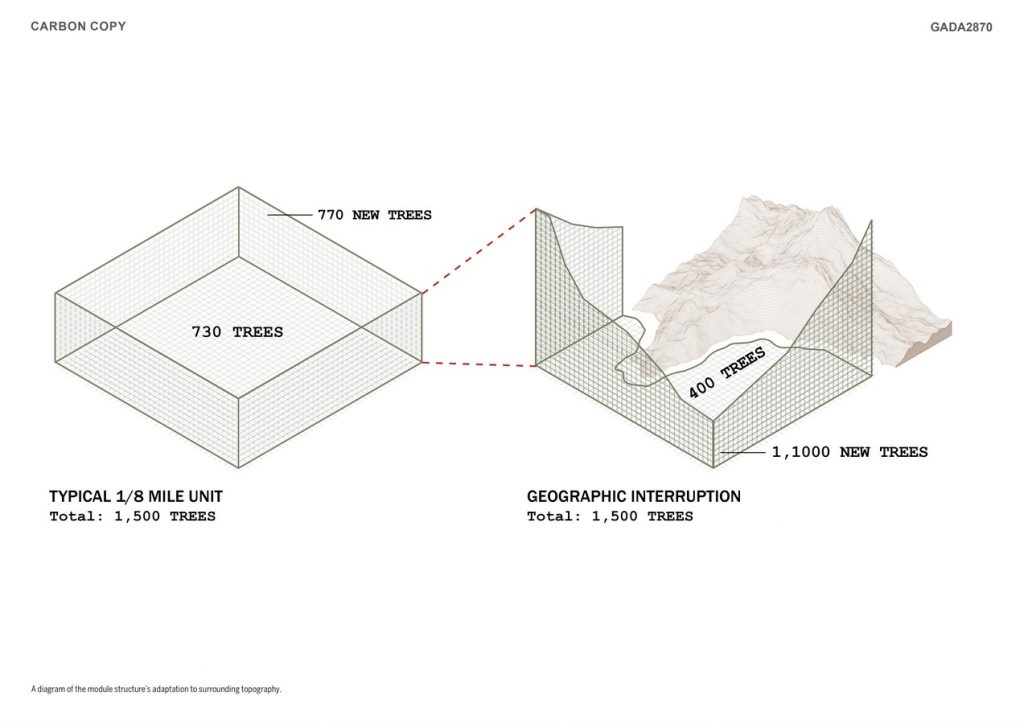 The historic one-mile Jefferson grid serves as the basis of the US land survey and is visible on satellite maps. The project divides this familiar grid into 64 smaller squares of approximately 600’ by 600’. Each side of the square is defined by a timber structure, inspired by the minimal elegance and strength of wooden roller coasters. 20’x 20x 20’ modular frames contain the tree as well as the soil necessary for its sustenance. Each tree is planted in a high tensile fabric pouch that contains the root ball, absorbs and retains water and allows room for growth. The pouch is secured on all four sides. The trees are staggered vertically to allow sun and rain to filter down and reach every tree.
The historic one-mile Jefferson grid serves as the basis of the US land survey and is visible on satellite maps. The project divides this familiar grid into 64 smaller squares of approximately 600’ by 600’. Each side of the square is defined by a timber structure, inspired by the minimal elegance and strength of wooden roller coasters. 20’x 20x 20’ modular frames contain the tree as well as the soil necessary for its sustenance. Each tree is planted in a high tensile fabric pouch that contains the root ball, absorbs and retains water and allows room for growth. The pouch is secured on all four sides. The trees are staggered vertically to allow sun and rain to filter down and reach every tree.
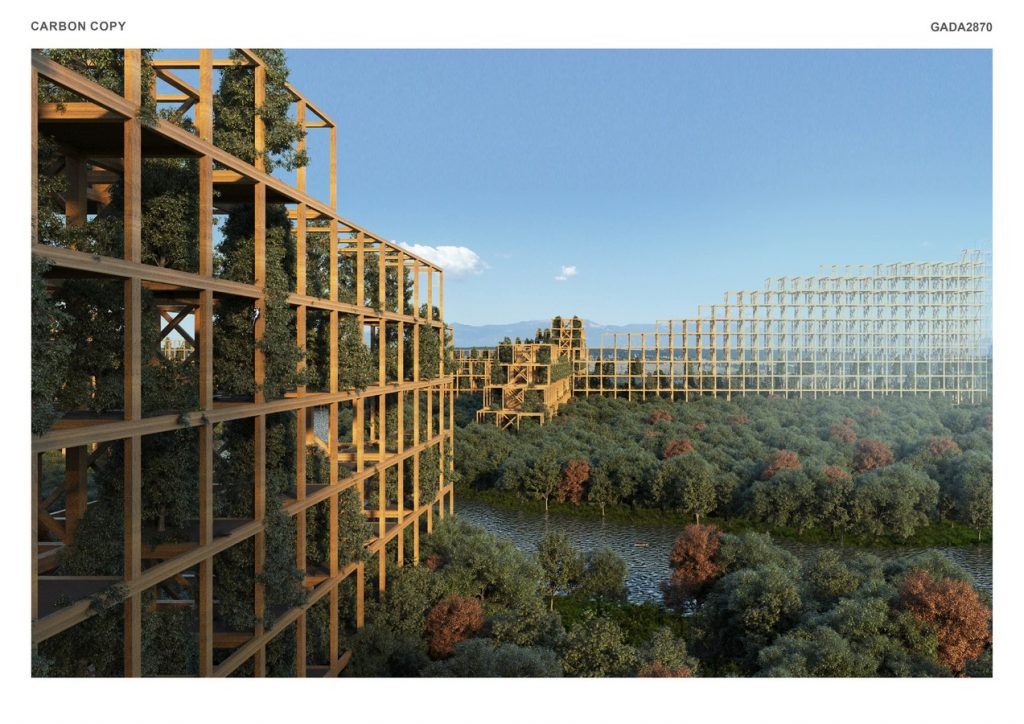 The project responds to natural obstacles and topography like mountains, valleys, and rivers. Wherever one of these obstructions interrupts the grid, the structure compensates for loss of tree modules by increasing in height. The result is a constantly undulating profile that dips and soars depending on what is happening below. Although the structure looks massive from the air, at the forest floor it remains very open to animal migration, bird flight, and vehicular and human passage.
The project responds to natural obstacles and topography like mountains, valleys, and rivers. Wherever one of these obstructions interrupts the grid, the structure compensates for loss of tree modules by increasing in height. The result is a constantly undulating profile that dips and soars depending on what is happening below. Although the structure looks massive from the air, at the forest floor it remains very open to animal migration, bird flight, and vehicular and human passage.
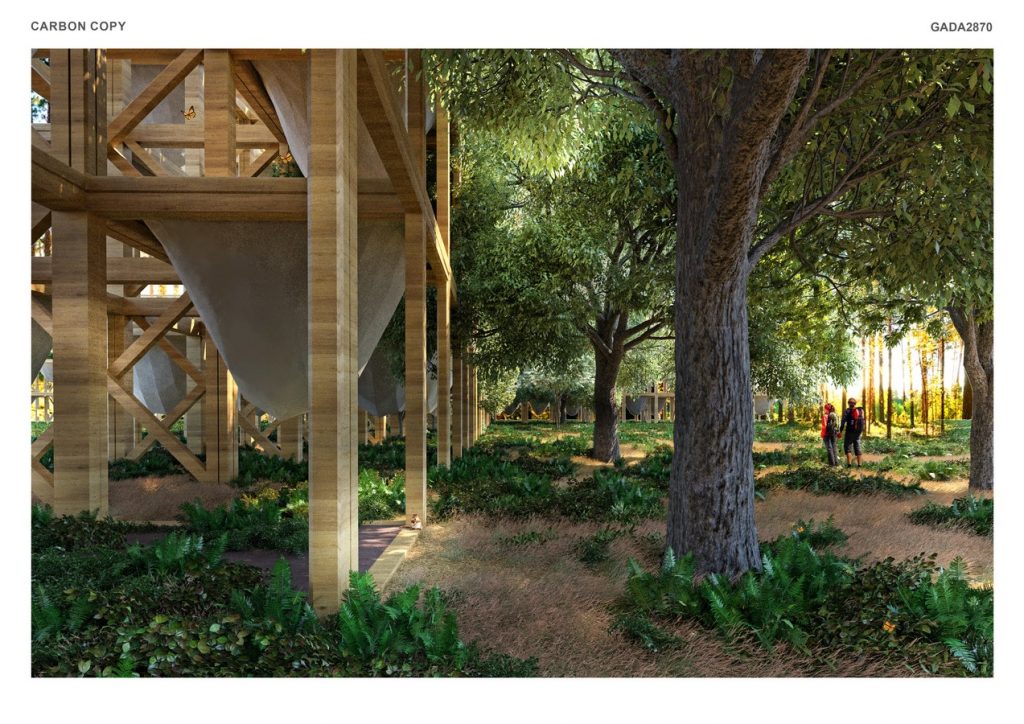 Planted as saplings, mixing species to encourage biodiversity as a means of resisting disease and blight, the trees’ falling seeds will take root in the suspended soil and eventually take over the entire structure. Both the trees and the timber structure sequester carbon dioxide that would otherwise be released into the atmosphere.
Planted as saplings, mixing species to encourage biodiversity as a means of resisting disease and blight, the trees’ falling seeds will take root in the suspended soil and eventually take over the entire structure. Both the trees and the timber structure sequester carbon dioxide that would otherwise be released into the atmosphere.
 By expanding vertically and doubling the number of trees in a given area, this intervention negates the carbon released through deforestation and restores atmospheric equilibrium. While deforestation is inevitable on a regional scale, our project can slow or mitigate this development on a larger, global scale by replacing cleared land in one country with a skyforest. The new growth will increase the planet’s capacity to sequester harmful greenhouse gases, and the intervention will play its part in restoring balance to the earth.
By expanding vertically and doubling the number of trees in a given area, this intervention negates the carbon released through deforestation and restores atmospheric equilibrium. While deforestation is inevitable on a regional scale, our project can slow or mitigate this development on a larger, global scale by replacing cleared land in one country with a skyforest. The new growth will increase the planet’s capacity to sequester harmful greenhouse gases, and the intervention will play its part in restoring balance to the earth.

